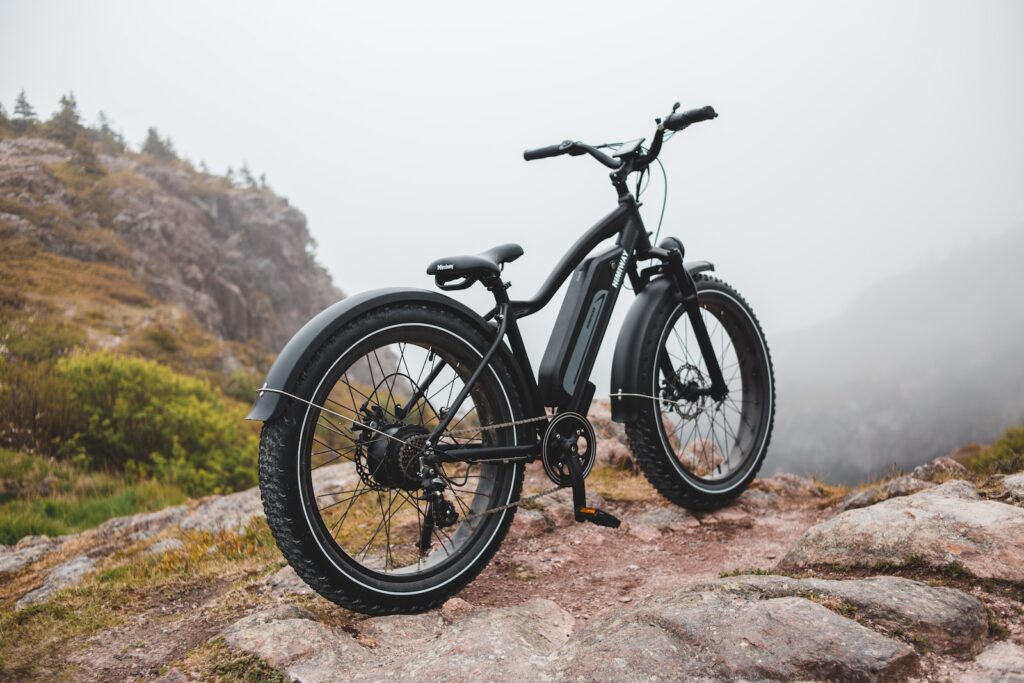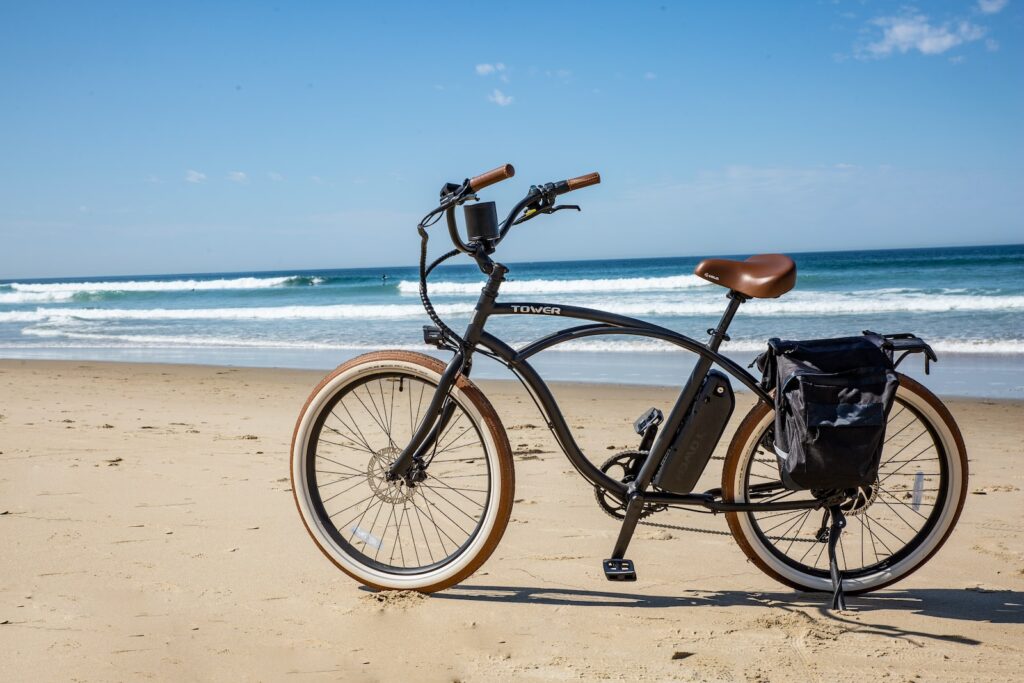Why Ebikes are Better for Your Health and the Environment Than Electric Cars

Why Ebikes are Better for Your Health and the Environment Than Electric Cars Hello everyone, It’s time to talk about the benefits of ebikes over electric cars, not just for physical health, but also for mental health. Many climate activists have always advocated for sustainable transportation solutions that can help us reduce our carbon footprint and combat climate change. Electric bikes, or ebikes, are a great alternative to electric cars and have many advantages that we need to consider. Physical Health Firstly, ebikes are better for our physical health. Riding an ebike can help us stay active and improve our fitness levels. It’s a great way to get some exercise while running errands or commuting to work. On the other hand, electric cars require us to sit in traffic and don’t offer any physical activity. In fact, a sedentary lifestyle can lead to health problems such as obesity, heart disease, and diabetes. Mental Health Secondly, ebikes are better for our mental health. Exercise is known to have numerous benefits for our mental health, including reducing stress, anxiety, and depression. Riding an ebike can help us feel more relaxed and energized, improving our mood and overall well-being. Ebikes also provide a sense of freedom and independence, which can help boost our self-confidence and sense of empowerment—plus peace of mind that comes from fresh air and nature. Environmental Benefits Thirdly, ebikes are more environmentally friendly than electric cars. Although electric cars produce zero emissions while driving, they still require electricity to charge their batteries. The electricity most often used to charge electric cars often comes from fossil fuels, which are still the primary source of electricity in many parts of the world. On the other hand, ebikes use less energy and can be charged using renewable energy sources such as solar or wind power. In addition, ebikes produce zero emissions while riding, making them a more sustainable transportation solution. Tire Particle Pollution May Be Harming Freshwater and Estuary Ecosystems Reduced Traffic Congestion Finally, ebikes can help reduce traffic congestion. Electric cars still contribute to traffic congestion, especially in urban areas. On the other hand, ebikes can help us avoid traffic and reach our destination faster. They are also easier to park and can be stored in smaller spaces. This can help reduce the demand for parking spaces and alleviate the pressure on our roads. In summary, ebikes are a great alternative to electric cars that offer a wide range of benefits, not just for our physical health but also for our mental health. Riding an ebike can help us stay active, improve our fitness levels, reduce stress, anxiety, and depression, and provide a sense of freedom and independence. Ebikes are also more affordable, more environmentally friendly, and can help reduce traffic congestion. As we strive for a more sustainable future, it is important to consider solutions like ebikes that can help us reduce our carbon footprint and protect our planet. Let’s encourage more people to adopt ebikes as a sustainable transportation solution and work together to create a cleaner, healthier, and more sustainable world. Thanks for reading, and let’s continue to protect our planet and our mental health. “Riding an ebike is like being a superhero, except instead of saving the world from supervillains, I’m saving the planet from carbon emissions – one pedal at a time!” Larry the Llama Influencer Larry the Llama’s Ebike Discovery Larry the Llama was a curious and adventurous creature who loved exploring the world around him. He roamed the grassy hills and rocky mountains of his home, always eager to discover something new. One day, while on a hike, he stumbled upon an electric bike lying in the middle of the trail. He had never seen anything like it before and was intrigued by the strange contraption. Larry inspected the bike closely, fascinated by its sleek design and powerful motor. He had heard of electric cars before, but this was something different. He wondered how it worked and how fast it could go. He noticed a small note attached to the bike that read “Try Me!” and decided to give it a spin. As he turned on the electric motor, Larry felt a rush of excitement. He pedaled forward, and the bike took off, propelling him up the hill with ease. It was a feeling unlike any he had experienced before. He felt free and empowered, gliding through the hills effortlessly. Larry had always been conscious of his impact on the environment and the need to reduce his carbon footprint, and this new discovery seemed like the perfect solution. From that day on, Larry was committed to using his new electric bike as his primary mode of transportation. He quickly discovered that it was a faster and more efficient way to get around, and he felt better knowing that he was doing his part to reduce his carbon footprint. He would ride his bike to visit his llama friends, to run errands in town, and even to explore new parts of his home. As he rode his bike through the hills, he would often stop to take in the breathtaking views around him. He would breathe in the fresh mountain air and listen to the sounds of nature. He felt a sense of pride knowing that he was doing his part to protect his beautiful home and preserve it for generations to come. Over time, Larry’s commitment to reducing his carbon footprint grew stronger. He began advocating for sustainable transportation solutions and encouraged his friends and family to consider using electric bikes as a more eco-friendly way to get around. He even organized a community bike ride, inviting his fellow llamas to join him on a journey through the hills. Larry the Llama’s ebike discovery had not only changed his life but had also inspired those around him to take action to protect the environment. His commitment to reducing his carbon footprint had shown that small changes can make a big difference, and that we
Why Not Bike It

Riding a bike is the best way to experience the world, and it’s also the best way to reduce your carbon footprint. Sir David Attenborough Bicycling is a big part of the future. It has to be. There’s something wrong with a society that drives a car to work out in a gym. Bill Nye The bicycle is a simple solution to some of the world’s most complicated problems. Mark Twain
The Race

We lost one race – the race to prevent harmful impacts – but now, as warming accelerates, we find ourselves at the start of another: the race to mitigate a climate crisis and maintain a habitable planet. Michael Oppenheimer – Atmospheric Scientist, Princeton University’s Professor of Geosciences and International Affairs and long-time IPCC author
Breaking Down the Climate Crisis: A Comprehensive Series of Science, Effects, and Actions for a Greener World

Breaking Down the Climate Crisis: A Comprehensive Series of Science, Effects, and Actions for a Greener World In our blog series dedicated to the climate crisis, we will discuss the urgent issue of the climate change crisis and its impact on our planet in brief and easily digestible chunks. The posts will explore different facets of the climate crisis, including the science behind it, the environmental and social effects it is having, and hopefully individual actions and solutions we might undertake to mitigate and adapt to it. The aim of the Green Pixel series is to provide you with accessible information, empowering you to gain a better understanding of the climate crisis and to take an individual role to protect our planet, today. Be sure to stay tuned for brief upcoming posts in the Green Pixel series! Climate scientist Ed Hawkins created the Warming Stripes to visualize the long-term rise in global temperatures caused by human activities like burning fossil fuels. Warming Stripes graphics represent the change in temperature over the last 100+ years. Each stripe represents one year, and the color corresponds to temperature. Red stripes are years above a long-term average temperature and blue stripes are years below. Green Pixels


